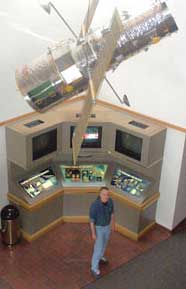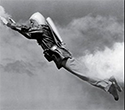Loving My Film Cameras…Not Simple Nostalgia
I was out and about with the Hasselblad over at that new rowhouse development nearby that’s been a muse ever since they started building it. I looked outside and checked the sky and it was that good mix of puffy clouds and blue sky that works well with a red filter and my photographic style. I wanted to finish a roll and ended up finishing two. It was more than the creative urge motivating me though. I’d just spent some out of budget money on a previously owned medium format camera of a type I’d own previously and sold perhaps recklessly. And that came about because of a really bad experience with that Canon R mirrorless digital camera I briefly owned that I’m still chewing on all this time later, after I traded it in for a full frame 6D and several good primes. Yes it was that painful.
Supposedly those mirrorless cameras are the latest and greatest but the fact was that camera kept getting in my way. It kept overriding my settings on ISO and shutter speed. I kept having to fumble with every setting on just about every shoot and it kept jolting me out of my zone. One problem was the control set of the R was just different enough from the Canon EOS digitals I own and have had previously that I was constantly getting confused. Always fumbling with the settings when I wanted most to be paying attention to what I was looking at was irritating, but I figured I’d eventually learn how to adjust the settings on the fly. Then, and quickly, something else began happening regularly that made me angry at the camera. That has never happened to me before.
It kept refusing to take the shot when I pressed the button.
I would press the shutter release and nothing happened. So I’d press it harder and still nothing happened. Cursing soon followed.
Many months later, having traded that camera in for one I could work with, I began thinking that part of the problem I was having is these new mirrorless cameras don’t simply meter the light, they analyse the scene and set the exposure accordingly before you even touch the shutter release. Which they can now because they’re not using one or more CDS cells looking at the light coming in from the lens. There is no mirror, so when the camera is turned on the detector is always seeing what you’re pointing the camera at. What you are seeing in the viewfinder is a computer generated image from the signal coming off the detector.
But there have to be many built-in assumptions going on in those real time analysis and those may not always work for every photographer and every scene. Supposedly there are ways of advising the onboard computer as to how to take the shots they way you want them taken, but those I have seen are cumbersome to use while you are working and trying to stay tuned into what you are seeing. Worse, I began to discover that even when going to an entirely manual mode, that is, I set the ISO, aperture and shutter speed, the camera would still insist that it knew better and would randomly refuse to take a shot when I hit the shutter release.
I think some of the problem there is I am almost always shooting into the sun. That’s part of my style. I don’t always do that, but I do it lots. That can be tricky but it often gets me the emotional feel that I am looking for in a scene. This however goes against the grain of most basic photography courses which will tell you to shoot with the sun at your back. And it’s true that you can almost never go wrong that way if the camera has any halfway decent metering system. My hunch is a lot of digital camera scene analysis computers are set up to expect that. Yes you can choose different modes…landscape, portrait, indoors, and so on…but the rule of thumb is the light is shining on the scene, whatever it is, from behind you, and most of the time I am shooting into the light. This may be confusing whatever algorithms are employed by the camera’s software to analyse a scene.
But I have done this since I was a teenager and I know how to work it. What I’ve always loved about my Canon film cameras is that 12 percent gray rectangle in the middle of the viewfinder is actually a beam splitter and a portion of the light hitting it is being deflected to the light meter. It’s precise in a way center weighted metering just isn’t and I need that extra precision when I’m shooting into the sun. I can sweep that 12 percent rectangle across a region and get an average of it, whereas a spot meter makes me take a lot of separate readings which would slow me down. I can find my middle grays and figure the extent of the range of highs to darks and decide where to set my aperture and shutter speed. Typically I always aim for the fastest speed I can since I almost never use a tripod.
The Canon digital SLRs I’ve had tell me what they’re focusing on but what they are metering has always seemed a bit fuzzy to me. The meters are analysing the scene inside the viewfinder, since until the mirror flops up the detector can’t see anything. I don’t actually know what it is they’re judging it by. But those cameras have a meter and hold function I quickly began using. Basically I would decide on a place to focus and meter, point the camera at it and just press lightly on the shutter release. The camera would focus and meter and I could hold that and re-compose the shot. Fine. Whatever. It worked. I was content.
But the R seemed to just throw all that away. Maybe if I’d studied the manual longer I would have got it. But every avenue I could glean from the manual seemed cumbersome…and just plain weird. I was told in one passage to use the touchscreen on the back to specify where to focus and meter, but that meant I’d have to take my eye away from the viewfinder while working which I deeply dislike. But never mind because I ended up having to turn off the touchscreen (there was a setting) because my nose was always hitting it and causing the camera to suddenly do something I didn’t want. There was a joystick like control on the back that supposedly allowed you to set a spot to focus and meter on, but it just seemed awkward and I never tried it.
The camera was a bundle of distractions. I would set the effective ISO to something and discover sometime later the camera had set it elsewhere. There seemed no way to force the camera to use the fastest possible shutter speed in any semi-auto mode other than aperture priority and use the widest aperture possible all the time. But even then the camera would occasionally balk.
And ultimately it was the nothing happening when I pressed the shutter release that really Really ticked me off. I will endure a lot of struggle to learn new things in the name of progress and personal growth, but by god when I press the shutter release all the way you take the damn shot! If I got it wrong I’ll deal with that. But I press the shutter release, you take the damn shot!
As I said, and obviously, I am still chewing on it. I really wanted to like that camera. The new electronic viewfinders are amazing. But if anything, the experience with the R made me so much closer to my old mechanical film cameras. And…so very happy to see film having a renaissance among young and old alike. Even if it means the good equipment is becoming scarce and expensive.
So…this came in the mail today…

I had one of these for years but ended up selling it to KEH when I needed some spare cash and concluded that since I had the Hasselblad I wouldn’t need it. By then I had the metering prism viewfinder for the Hasselblad which made working with it faster. And with it I found working with the Hasselblad much more like working with any of my 35mm film SLRs. The Mamiya has the typical TLR waist level viewfinder which reverses left and right and that made it hard for me to judge a scene. And no through the lens metering. You can get an eye level metering prism viewfinder that corrects right/left but it seems awkward to hold the camera that way. And I have become accustomed to using a handheld with the Leica, and I think I can work with that backwards left/right thing now.
And having only one good medium format camera in an age when getting them repaired might be hard, was something I decided was not worth the risk. So I bought another C330. I really like these for their solid heavy duty build and that you could swap out lenses. I don’t think there is another twin lens reflex you can do that on. A 55mm wide angle pair came just today and a correct lens hood for the taking lens is coming soon. I still have the red and orange filters for its lenses.
And when I press the shutter release, it takes the shot. The only reason the Hasselblad won’t is if I’m past the last shot on the roll or I still have the dark slide in. That’s completely reasonable.
I’ll take it for a drive when the weather and the sky look good.







































